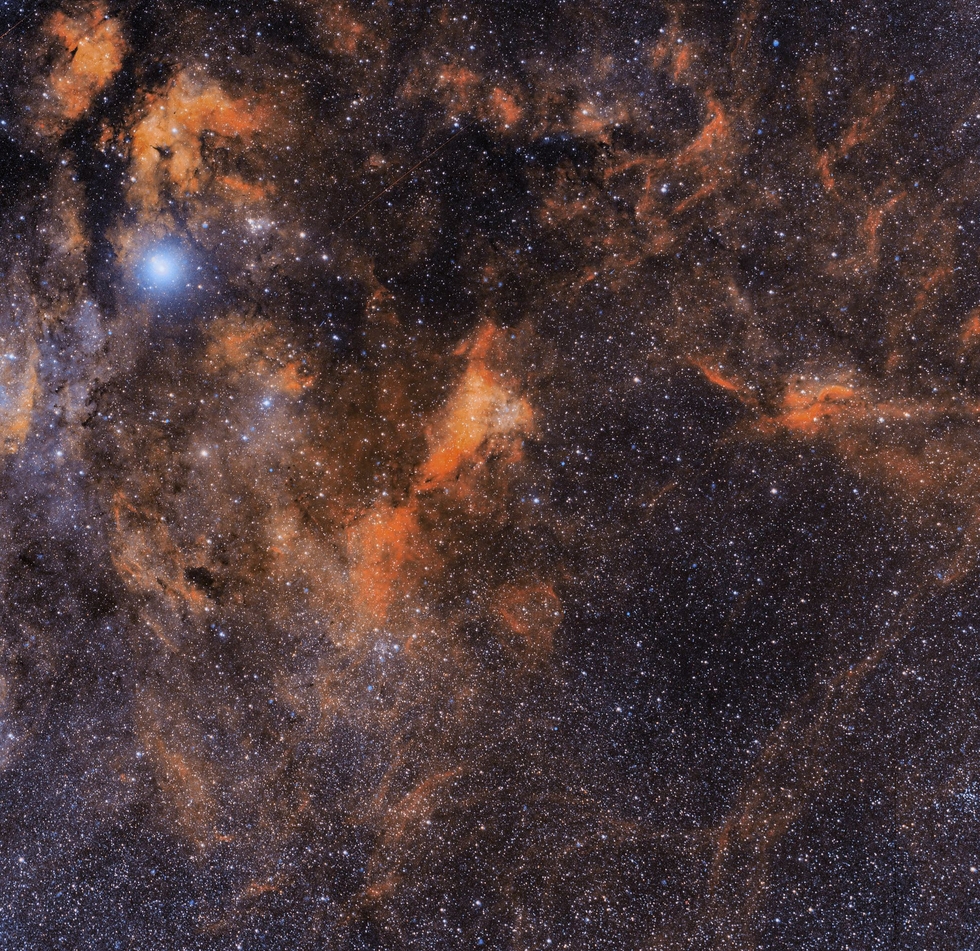Sadr Region
Sadr Region
Sadr, the brightest star in this image, the "heart" of Cygnus.
The Sadr region covers a large area in the constellation Cygnus, containing a vast nebula also known as the "Butterfly Nebula", IC 1318 and the dark nebula LDN 889.
Not far away, in the same area of the sky, is NGC 6888 (also known as the Crescent Nebula or with the acronym C 27), a diffuse nebula located about 5,000 light-years away from Earth. Within the cloud, the central star is visible, classified as a Wolf-Rayet star (WR 136). This fiery star scatters its outer shell via a strong stellar wind, ejecting the equivalent of one solar mass every 10,000 years. The complex structures of the nebula are likely the result of powerful wind interacting with material ejected at an earlier stage.
The Sadr region covers a large area in the constellation Cygnus, containing a vast nebula also known as the "Butterfly Nebula", IC 1318 and the dark nebula LDN 889.
Not far away, in the same area of the sky, is NGC 6888 (also known as the Crescent Nebula or with the acronym C 27), a diffuse nebula located about 5,000 light-years away from Earth. Within the cloud, the central star is visible, classified as a Wolf-Rayet star (WR 136). This fiery star scatters its outer shell via a strong stellar wind, ejecting the equivalent of one solar mass every 10,000 years. The complex structures of the nebula are likely the result of powerful wind interacting with material ejected at an earlier stage.
SPECIFICATIONS
Telescope
SPA-3-CCD
Camera
FLI PL16083
Location
IC ASTRONOMY OBSERVATORY, SPAIN
Date of observation
08-11-2021
Filters
SHO
Processing
Pixinsight and Photoshop
Credits
Credit Sauro Gaudenzi / data Telescope Live


